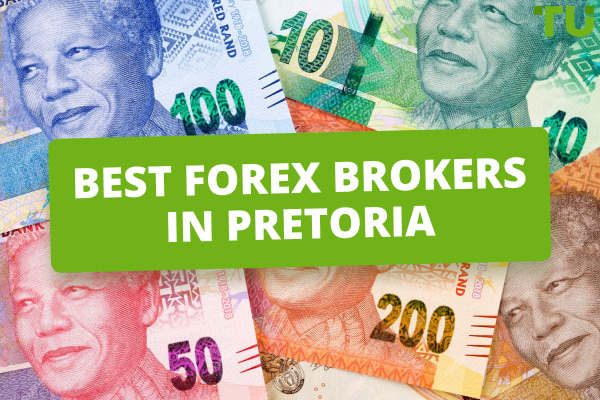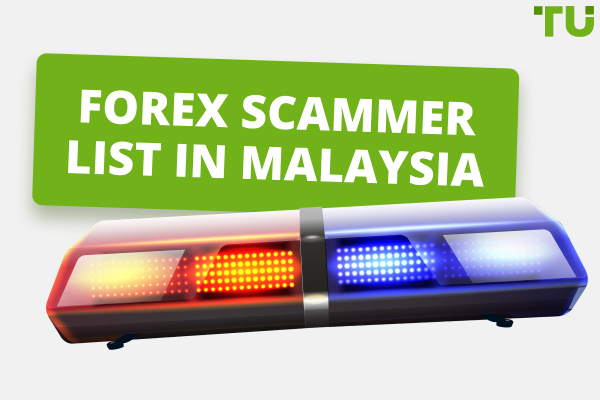Best Indian ETFs To Invest In 2024
According to experts the top 8 ETFs to consider for Indian market are:
-
1
-
2
-
3
-
4
-
5
-
6
-
7
-
8
Exchange-Traded Funds (ETFs) have emerged as a compelling asset class in India, gaining extensive attention particularly from small ticket-size investors. These securities are unique investment funds traded on stock exchanges, designed to mirror the performance of specific indices, commodities, or specific sectors. In this article, the experts at TU have given top 9 ETFs to invest in 2024. Before we proceed with the list, please note that this article does not constitute financial advice and your personal investment decisions should be made only after taking advice from your financial advisors.
-
Which Indian stock is good for the long term?
Determining the best Indian stock for the long term involves considering various factors such as the company's financial health, growth prospects, and industry positioning. Stocks like Tata Consultancy Services (TCS), Kotak Mahindra Bank, and HDFC Bank are often considered solid choices due to their consistent performance and stability in the market.
Top 8 ETFs to Invest in 2024
| Name | Stock Ticker | NAV | AUM | Expense Ratio |
|---|---|---|---|---|
Mirae Asset NYSE FANG+ ETF |
MAFANG |
₹ 67.70 |
₹ 1510 Cr |
0.65% |
iShares MSCI India ETF |
INDA |
$ 45.04 |
$ 5.89 Bn |
0.64% |
Aditya Birla Sun Life Gold ETF |
BSLGOLDETF.NS |
₹ 54.85 |
₹ 681 Cr |
0.54% |
ICICI Prudential Nifty ETF |
ICICINIFTY |
₹ 216.78 |
₹ 8333 Cr |
0.05% |
Nippon India Nifty Pharma ETF |
PHARMABEES |
₹ 16.05 |
₹ 427 Cr |
0.21% |
Nippon India ETF Nifty Infrastructure BeES |
INFRABEES |
₹ 667.31 |
₹ 45 Cr |
1.03% |
Columbia India Consumer ETF |
INCO |
$ 56.24 |
$ 124.3 M |
0.75% |
Kotak Nifty IT ETF |
KOTAKIT |
₹ 33.81 |
₹ 97 Cr |
0.18% |
Mirae Asset NYSE FANG+ ETF (TICKER: MAFANG)
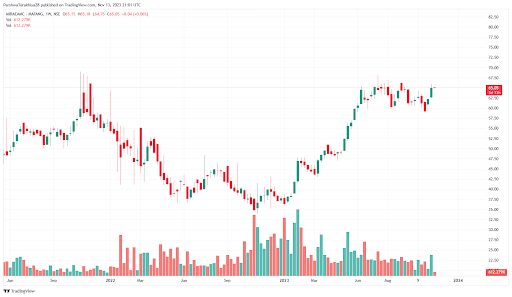
Mirae Asset NYSE FANG+ ETF (TICKER: MAFANG)
MAFANG offers investors a strategic gateway to the future of technology and innovation. By replicating the NYSE FANG+ Total Return Index, this open-ended scheme focuses on high-growth technology, internet, and media stocks, providing a well-diversified and equal-weighted exposure to industry leaders like Meta Platforms Inc, Apple Inc, and NVIDIA Corp.
The ETF's concentration in companies geared for future technology disruptions positions it as a forward-looking investment choice, aligning with the rapidly evolving tech landscape. Investors can benefit from the fund's passive international exposure, primarily in the lucrative US market, at a low cost. This strategic positioning makes it an attractive option for wealth creation, especially for those with a recommended investment horizon of 3+ years.
This ETF also presents a proactive approach to risk management, as the inclusion of companies positioned for future disruptions not only adds a growth element but also mitigates concentration risks.
Overall, with its focused and forward-looking portfolio, low-cost international exposure, and attention to risk management, MAFANG can be a considerable investment choice for 2024. The top 10 Holdings of this ETF as per latest available data are mentioned below
| Name | Stock Ticker | Weight |
|---|---|---|
|
Apple Inc |
AAPL |
10.00% |
|
Amazon.com Inc. |
AMZN |
10.00% |
|
Facebook Inc. |
FB |
10.00% |
|
Alphabet Inc. Class A |
GOOGL |
10.00% |
|
Alphabet Inc. Class C |
GOOG |
10.00% |
| Name | Stock Ticker | Weight |
|---|---|---|
|
Netflix Inc. |
NFLX |
10.00% |
|
Tesla Inc. |
TSLA |
10.00% |
|
NVIDIA Corp. |
NVDA |
10.00% |
|
Microsoft Corp. |
MSFT |
10.00% |
|
Adobe Inc. |
ADBE |
10.00% |
The iShares MSCI India ETF (TICKER: INDA)
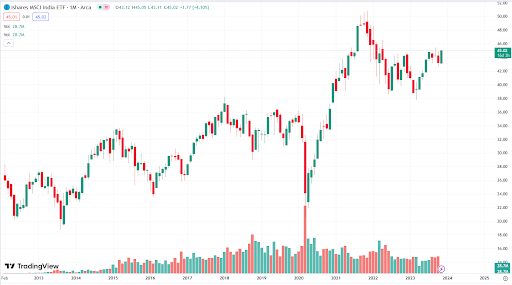
Mirae Asset NYSE FANG+ ETF (TICKER: MAFANG)
INDA provides an investment opportunity amid the shifting landscape of global markets. As investors rotate their portfolios due to uncertainties surrounding China, India emerges as a strategic alternative, offering growth potential, political stability, and favorable business reforms. The ongoing boom in India's IT sector further enhances its appeal.
INDA, tracking the MSCI India Index, provides a direct avenue for investors to access the Indian equity market. With a low expense ratio of 0.64%, the ETF stands out as a cost-effective and efficient way to gain exposure to India's vibrant and dynamic economy.
One of the key attractions is the ETF's top holdings, featuring industry leaders such as Reliance Industries, HDFC Bank, and Infosys. These companies contribute to the ETF's diversification and align with India's economic prowess.
Moreover, India's advantageous position as a beneficiary of sentiments against China adds another layer of potential. The Indian stock market's impressive triple-digit returns over the past decade, coupled with its low correlation to the S&P 500, positions INDA as a strategic choice for investors seeking both growth potential and risk mitigation. The top 10 Holdings of this ETF as per latest available data are mentioned below
| Name | Stock Ticker | Weight |
|---|---|---|
|
Reliance Industries Ltd |
RELIANCE.NS |
8.37% |
|
ICICI Bank Ltd |
ICICIBANK.NS |
5.67% |
|
Infosys Ltd |
INFY.NS |
5.46% |
|
HDFC Bank Ltd |
HDFCBANK.NS |
4.95% |
|
Tata Consultancy Services Ltd |
TCS.NS |
3.70% |
|
Axis Bank Ltd |
AXISBANK.BO |
2.68% |
|
Bajaj Finance Ltd |
BAJFINANCE.BO |
2.45% |
|
Hindustan Unilever Ltd |
HINDUNILVR.BO |
2.45% |
|
Bharti Airtel Ltd |
BHARTIARTL.NS |
2.45% |
|
Larsen & Toubro Ltd |
LT.NS |
2.42% |
Aditya Birla Sun Life Gold ETF (TICKER: BSLGOLDETF.NS)
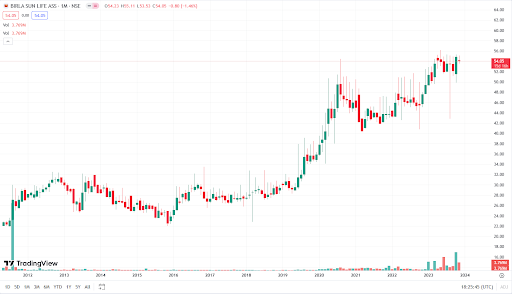
Aditya Birla Sun Life Gold ETF (TICKER: BSLGOLDETF.NS)
This ETF offers investors an efficient gateway to the long-term return potential of gold bullion without the challenges associated with physical ownership. Boasting an impressive annualized return of 21.24% over the past year, 13.00% over the past three years, and 7.48% over the past five years, it provides an accessible and cost-effective means to invest in gold.
Each unit of the ETF, equivalent to approximately 1 gram of gold, ensures purity assurance, high liquidity, and a reliable store of value. With a minimal investment of ₹500 and no entry or exit loads, it offers a hassle-free entry into the gold market..
The ETF's allocation of a minimum of 95% of its net assets to 99.5% pure physical gold, combined with the potential increase in gold prices in 2024, positions it as an attractive investment choice. Moreover, gold ETFs provide diversification beyond traditional assets, historically showing lower correlation with stocks and bonds, acting as a hedge against market volatility.
Notably, the Aditya Birla Sun Life Gold ETF's low Total Expense Ratio (TER) of 0.54% enhances its cost efficiency. Choosing this ETF over physical gold is advisable, offering superior liquidity, cost-effectiveness, and protection against market risk, making it a strategic and hassle-free investment option for 2024.
| Name | Stock Ticker | Weight |
|---|---|---|
|
Gold |
NA |
97.89% |
|
Cash & Cash Equivalents |
NA |
2.11% |
The ICICI Prudential Nifty ETF (TICKER: ICICINIFTY)
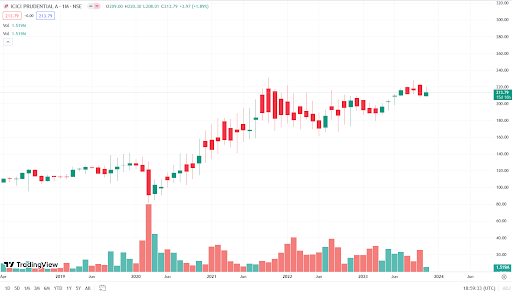
The ICICI Prudential Nifty ETF (TICKER: ICICINIFTY)
The ICICI Prudential Nifty ETF is designed to mirror the total returns of the Nifty 50 Index by investing in the same stocks in the same proportions. Some of its top holdings include key players like HDFC Bank, Reliance Industries, Infosys, and ICICI Bank.
Investing in this ETF offers several advantages. The low expense ratio of 0.05% enhances cost efficiency, ensuring that investors retain a significant portion of their returns. Furthermore, the fund's focus on the top 50 companies listed on the National Stock Exchange of India provides exposure to well-established entities with a proven track record of consistent returns.
Diversification is another key benefit, as the ETF spans various sectors such as banking, IT, and energy. This diversification mitigates risks associated with sector-specific volatility, offering investors a balanced portfolio. Looking at the performance, the ICICI Prudential Nifty ETF has demonstrated robust returns, boasting a 17.22% return over the past year and a notable 15.8% over the past three years as of November 2023.
In the context of India's growing economy and government initiatives, the Nifty is poised to rise in 2024. The government's plans for economic growth and development in all prominent sectors align with the upward trajectory of the Nifty, making the ICICI Prudential Nifty ETF an attractive investment option for those seeking to capitalize on India's promising economic landscape. The top 10 holdings of this ETF as on 31st oct 2023, are mentioned below
| Name | Stock Ticker | Weight |
|---|---|---|
|
HDFC Bank |
HDFCBANK |
10.97% |
|
Infosys |
INFY |
8.89% |
|
ICICI Bank |
ICICIBANK |
8.68% |
|
Reliance Inds. |
RELIANCE |
7.98% |
|
TCS |
TCS |
5.98% |
|
Kotak Mahindra |
KOTAKBANK |
5.57% |
|
HCL Tech |
HCLTECH |
4.95% |
|
Bharti Airtel |
BHARTIARTL |
4.83% |
|
L&T |
LT.NS |
4.78% |
|
Axis Bank |
AXISBANK |
4.75% |
Nippon India Nifty Pharma ETF (TICKER: PHARMABEES)
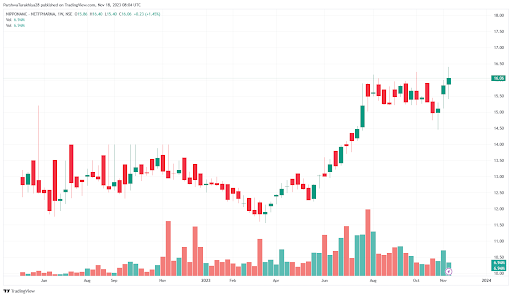
Nippon India Nifty Pharma ETF (TICKER: PHARMABEES)
PHARMABEES ETF offers investors a strategic entry into the pharmaceutical and healthcare sector, boasting an AUM of ₹448.22 Cr. The fund is designed to replicate the Nifty Pharma Index, ensuring a passive management approach by investing at least 80% of its assets in pharmaceutical and healthcare company shares.
As of the latest available data, the fund exhibits a robust allocation of 99.94% in domestic equities, with 69.16% in large-cap stocks, 22.17% in mid-cap stocks, and 0.93% in small-cap stocks. The top holdings, including Sun Pharma, Dr. Reddy’s, and Cipla, further exemplify its focus on industry leaders.
The fund's expense ratio stands at an attractive 0.21%, enhancing cost efficiency for investors. In terms of performance, the Nippon India Nifty Pharma ETF has delivered a return of 20.26% over the past year, showcasing its resilience in a dynamic market environment.
Investing in a healthcare ETF such as Nippon India Nifty Pharma is particularly relevant in the current scenario, given the global emphasis on health and pharmaceuticals. The need for healthcare services and products has surged, driven by ongoing health challenges and pandemic-related concerns. Additionally, industry analysis by experts points towards sustained growth in the healthcare sector in 2024, making this ETF an attractive option for investors looking to capitalize on the anticipated expansion and stability within the pharmaceutical and healthcare industry.
Nippon India ETF Nifty Infrastructure BeES (TICKER: INFRABEES)
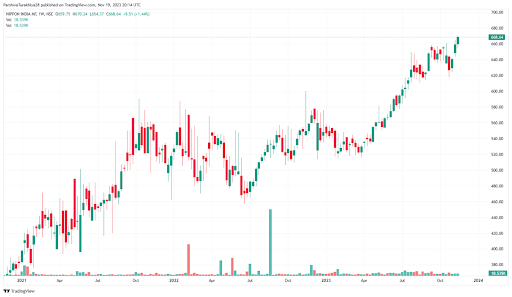
Nippon India ETF Nifty Infrastructure BeES (TICKER: INFRABEES)
The INFRABEES ETF focuses on India's developing economy, robust growth prospects, and significant infrastructural development for potential gains. The fund's expense ratio of 1.03% is notably lower than the category average of 0.44%, translating to cost-effectiveness for investors. The portfolio turnover ratio of 64% suggests active management, indicating the fund manager's responsiveness to market changes. The top holdings, including prominent companies like Reliance Industries and Larsen & Toubro, add stability and growth potential to the portfolio.
Additionally, this ETF offers diversification within the infrastructure industry, across key sectors such as Telecom, Power, Port, Air, Roads, Railways, and shipping. The focus on infrastructure-related activities aligns with India's growth trajectory, making it a strategic choice for long-term investors. The fund's transparency, with constituents of the Nifty Infrastructure Index disclosed daily, enhances investor confidence. With a track record of 13 years and 4.52% returns since inception, this ETF presents a well-rounded investment option for those looking to capitalize on India's infrastructure development. The top 10 holdings of this ETF as per latest available data are mentioned below
| Name | Stock Ticker | Weight |
|---|---|---|
|
Reliance |
RELIANCE |
19.76% |
|
Larsen & Toubro |
LT.NS |
17.06% |
|
Bharti Airtel |
BHARTIARTL |
11.12% |
|
NTPC |
NTPC |
5.40% |
|
Ultratech Cement |
ULTRACEMCO |
4.67% |
|
Power Grid Corporation Of India |
POWERGRID |
4.44% |
|
Oil & Natural Gas Corporation |
ONGC |
3.50% |
|
Grasim |
GRASIM |
3.35% |
|
Adani Ports and Special Economic Zone |
ADANIPORTS |
3.02% |
|
Apollo Hospitals Enterprise |
APOLLOHOSP |
2.33% |
The Columbia India Consumer ETF (TICKER: INCO)
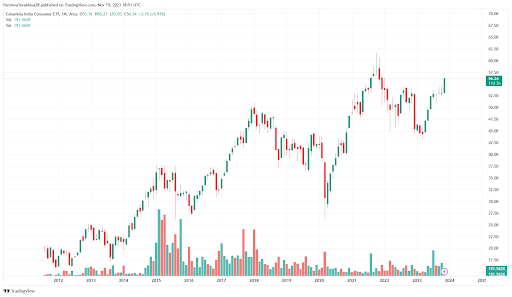
The Columbia India Consumer ETF (TICKER: INCO)
INCO positions itself as a promising investment vehicle, reflecting the positive outlook on emerging markets, particularly India, as projected by a MarketBeat report. The expectation of India benefiting from increased foreign investment and consumer spending aligns with the ETF's focus on Indian companies in the consumer industry. This ETF particularly focuses on investing in Indian businesses operating within the consumer sector, including but not limited to retail, media, and healthcare.
INCO, based on the INDXX India Consumer index, has demonstrated robust performance, hitting a new 52-week high and exhibiting a 26.92% increase from its 52-week low. Top holdings like Nestle India Ltd and Godrej Consumer Products Ltd contribute to its success, with Nestle India experiencing a noteworthy 19.71% one-year change.
The ETF maintains a competitive edge with a net expense ratio of 0.75% and total net assets of $118.90m USD as of Oct 31, 2023. Launched in 2011, it seeks invest at least 80% in Indian consumer companies listed on the National Stock Exchange or the Bombay Stock Exchange. The top 10 holdings of this ETF as on 1st November, 2023 is mentioned below in the table.
| Name | Stock Ticker | Weight |
|---|---|---|
|
Nestle India Ltd |
NESTLEIND |
13.09% |
|
Godrej Consumer Products Ltd |
GODREJCP |
11.84% |
|
Dabur India Ltd |
DABUR |
9.40% |
|
Britannia Industries Ltd |
BRITANNIA |
8.78% |
|
Marico Ltd |
MARICO |
8.46% |
|
Hindustan Unilever Ltd |
HINDUNILVR |
8.33% |
|
Bharat Forge Ltd |
BHARATFORG |
7.20% |
|
United Spirits Ltd |
MCDOWELL-N |
6.91% |
|
Bajaj Auto Ltd |
BAJAJ-AUTO |
5.85% |
|
Titan Co Ltd |
TITAN |
5.67% |
The Kotak Nifty IT ETF (TICKER: KOTAKIT)
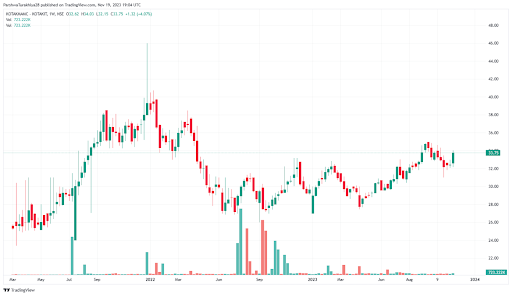
The Kotak Nifty IT ETF (TICKER: KOTAKIT)
The Kotak Nifty IT ETF aims to mimic the NIFTY IT Index's composition and performance. As of November 11, 2023, the latest Net Asset Value (NAV) of the fund stands at ₹95.22, with a total expense ratio of 0.25%.
Owing to a freeze on technology spending in the IT sector due to challenging macroeconomic conditions, the Kotak Nifty IT ETF has experienced a return of -1.4% in the last year and -0.9% in the last three years. However, there is optimism about a significant comeback in the following year, driven by the anticipated boom in the IT sector and overall economic growth.
This passively managed fund offers several advantages, including diversification by investing in the top 10 IT companies in India, thereby reducing the associated risk of investing in a single company. Additionally, with a low expense ratio the Kotak Nifty IT ETF boasts a lower cost structure compared to the average expense ratio of mutual funds in India. The top 10 holdings of this ETF as on 31st Oct, 2023 are mentioned below.
| Name | Stock Ticker | Weight |
|---|---|---|
|
HDFC Bank |
HDFCBANK |
13.22% |
|
Reliance Industries |
RELIANCE |
9.24% |
|
ICICI Bank |
ICICIBANK |
7.65% |
|
Infosys |
INFY |
5.83% |
|
ITC |
ITC |
4.53% |
|
Larsen & Toubro |
LT.NS |
4.23% |
|
TCS |
TCS |
4.12% |
|
Axis Bank |
AXISBANK |
3.25% |
|
Kotak Mah. Bank |
KOTAKBANK |
3.05% |
|
Bharti Airtel |
BHARTIARTL |
2.75% |
Best Stock brokers
Key factors to be considered before investing in ETF
Investment Plan
Start by establishing your financial goals, whether it's saving for retirement, buying a home, or funding education. Consider the current composition of your investment portfolio to avoid overconcentration in specific assets. Determine the time horizon for your investment, aligning it with your life goals. Assess your risk tolerance, understanding how comfortable you are with market fluctuations, as it plays a crucial role in shaping your investment strategy.
Type of ETF
Whether you seek diversification, an alternative to stocks, or exposure to specific assets, your choice of ETF will vary. Choose between equity, gold, international, sectors and debt ETFs based on your unique investment objectives.
Investment Motivation
Whether you aim for portfolio diversification, exposure to specific sectors, or a trading strategy, your motivation shapes your investment approach. Define your goals clearly to select an ETF that complements your financial aspirations.
Specific Investment Goals
Specify your approach to ETF investment. Determine whether you prefer actively trading ETF units or adopting a buy-and-hold strategy based on your risk appetite and market outlook. Identify specific sectors or asset classes you want exposure to, tailoring your investment goals to your unique preferences.
Fund Size
Consider the fund size of an ETF as it indicates investor interest. Larger fund sizes often correlate with higher liquidity and lower costs. While there are no rigid rules, avoiding ETFs with very small fund sizes is generally recommended by financial experts.
Age of the ETF
Evaluate the historical performance of an ETF by looking at its age. While new funds continuously enter the market, opting for those with a track record of at least a couple of years provides a basis for performance analysis. However, past performance should not be the sole determinant of future returns.
Trading Volumes
Assess the trading volumes of an ETF, ensuring there's sufficient liquidity for easy buying and selling on the stock exchange. Higher trading volumes usually indicate demand, contributing to the overall liquidity of the ETF.
Costs
Compare the expense ratios of different ETFs. The expense ratio includes management fees, administrative costs, and operating expenses. Lower expense ratios contribute to maximizing returns. While cost is crucial, it should be considered alongside other factors like liquidity and historical performance.
Tracking Error
Prefer ETFs with lower tracking errors. Tracking error measures the difference between the returns of the ETF and the underlying index it aims to replicate. A lower tracking error suggests that the ETF closely mirrors the index's performance.
Market Conditions
Stay informed about current market conditions and trends that may impact the chosen ETF. Consider economic indicators, geopolitical events, and other external factors that could influence the performance of the ETF in the market.
Liquidity
Evaluate the liquidity of an ETF, a key factor in facilitating easy buying and selling on the stock exchange. Higher liquidity, often associated with a larger investor base, contributes to a more efficient market for the ETF.
ETF v/s Mutual funds
Exchange-Traded Funds (ETFs) serve as passive investment options, commonly tracking benchmark indices such as Nifty or Sensex. Unlike regular mutual funds, ETFs are actively traded on the stock exchange. The responsibility of fund managers is to acquire stocks from the benchmark indices, ensuring that the ETF's returns closely mirror the index performance.
The primary allure of ETFs lies in their provision of low-cost, diversified, and liquid investment avenues. These funds find their listing on both the National Stock Exchange of India (NSE) and the Bombay Stock Exchange (BSE), allowing investors to engage in buying or selling through their stockbrokers.
The following table discusses the core differences between mutual funds and ETFs in further detail
| Aspect | Mutual Funds | Exchange-Traded Funds (ETFs) |
|---|---|---|
|
Active vs. Passive Management |
Historically, mutual funds have been actively managed, involving frequent buying and selling by fund managers. |
Traditionally, ETFs have been passively managed, tracking market or sector indices. However, there is a rise in actively-managed ETFs. |
|
Trading Dynamics |
Mutual funds are traded at the end of each day based on the Net Asset Value (NAV). |
ETFs can be traded like stocks throughout the day, providing intra-day liquidity. |
|
Fees and Expenses |
Mutual funds generally have higher fees and expense ratios due to active management. |
ETFs generally have lower fees and expense ratios, especially for passively managed ones. |
|
Fund Structures |
Mutual funds can be open-ended (unlimited shares) or closed-ended (fixed number of shares). |
ETFs have various structures, including open-end funds, UITs, and grantor trusts, each with specific regulations. |
|
Minimum Investment Requirements |
Mutual funds often have higher minimum investment requirements. |
ETFs usually have lower minimum investment requirements. |
|
Management Style |
Mutual funds are actively managed by fund managers or teams. |
ETFs can be passively managed, closely tracking indices, or actively managed. |
|
NAV Calculation Time |
NAV for mutual funds is calculated at the end of the trading day. |
ETF prices fluctuate throughout the day based on market demand and supply. |
|
Creation and Redemption Process |
Mutual funds do not involve a creation/redemption process; transactions occur directly between investors and the fund. |
ETFs have a unique creation/redemption process involving authorized participants, enhancing tax efficiency. |
|
Tax Efficiency |
Tends to be less tax-efficient due to frequent buying and selling. |
Typically more tax-efficient due to passive management. |
|
Flexibility in Trading |
Mutual funds are limited to end-of-day trading based on NAV. |
ETFs offer intra-day trading like stocks, providing flexibility to investors. |
Rules and Regulation
Licensing in India
In India, brokers are regulated by the Reserve Bank of India (RBI) and the Securities and Exchange Board of India (SEBI). The former supervises foreign currency and the latter controls the stock market. The conditions for obtaining a license are: sufficient capital, a detailed business plan, compliance with rules and regulations, professional qualifications of key employees, and a professional reputation of the applicant.
Investor protection in India
To resolve disputes, traders can approach the RBI and SEBI that prevent fraud and dishonest activity in the securities market.
Taxation in India
Traders in India are subject to two primary types of taxes: direct and indirect. Direct taxes include a 5%-30% income tax. Capital gains tax is 15% for short-term profits and 10% for long-term ones. Trading income under 2.5 lakhs of Indian rupees is not taxable.
Summary
The top 8 Exchange-Traded Funds (ETFs) recommended for 2024 cover a range of investment opportunities in areas like technology, gold, pharmaceuticals, infrastructure, and consumer goods. These ETFs offer ways to grow your money, diversify your portfolio, and manage risks. Each ETF has its own strengths and focuses, so it's important to choose based on your specific investment goals. Before investing, consider factors like the size of the fund, how it has performed in the past, and how easily you can buy or sell shares. Stay informed about the market, and make choices that align with your financial plans for the best results.
Team that worked on the article
Parshwa is a content expert and finance professional possessing deep knowledge of stock and options trading, technical and fundamental analysis, and equity research. As a Chartered Accountant Finalist, Parshwa also has expertise in Forex, crypto trading, and personal taxation. His experience is showcased by a prolific body of over 100 articles on Forex, crypto, equity, and personal finance, alongside personalized advisory roles in tax consultation.
Dr. BJ Johnson is a PhD in English Language and an editor with over 15 years of experience. He earned his degree in English Language in the U.S and the UK. In 2020, Dr. Johnson joined the Traders Union team. Since then, he has created over 100 exclusive articles and edited over 300 articles of other authors.
Mirjan Hipolito is a journalist and news editor at Traders Union. She is an expert crypto writer with five years of experience in the financial markets. Her specialties are daily market news, price predictions, and Initial Coin Offerings (ICO).






